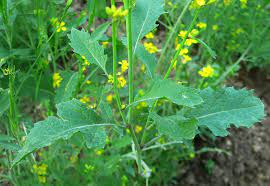Brassica nigra, also known as black mustard, is a crop that has been cultivated for thousands of years for its culinary and medicinal uses. This article will explore the historical and current uses of Brassica nigra, its growth requirements, and its importance in the modern agricultural industry.
Brassica nigra is a plant that belongs to the Brassicaceae family, which includes other crops such as broccoli, cauliflower, and cabbage. This crop is widely grown in various parts of the world, with India being the largest producer. The plant is a cool-season annual and can be grown in a range of soils, although it thrives in well-drained, loamy soils.
Black mustard has been used for centuries for its medicinal and culinary properties. In traditional medicine, it has been used to treat ailments such as rheumatism, asthma, and coughs. It has also been used in the production of condiments such as mustard, and as a spice in a variety of dishes.
In modern times, Brassica nigra has become increasingly important in the agricultural industry due to its versatility and hardiness. The plant is used in the production of biofuels, as a cover crop to prevent soil erosion, and as a green manure to improve soil quality. Additionally, black mustard is an important source of oil and protein, making it a valuable crop for the food industry.
In conclusion, Brassica nigra, or black mustard, is an invaluable crop with a rich history and many uses. Its hardiness, versatility, and importance in the food and agricultural industries make it a crop that farmers and scientists alike should continue to invest in.
#BrassicaNigra #BlackMustard #Agriculture #FoodIndustry #CropProduction #Biofuels #SoilErosion #GreenManure #OilProduction #ProteinProduction












